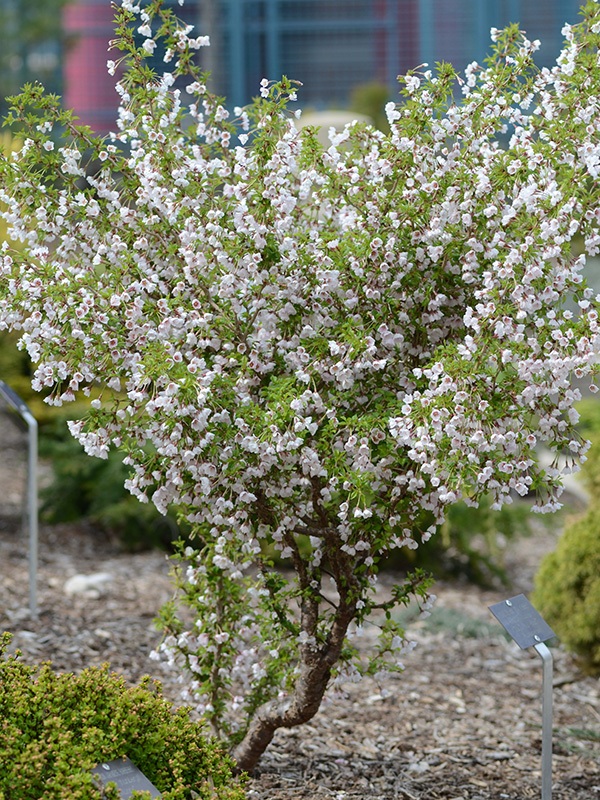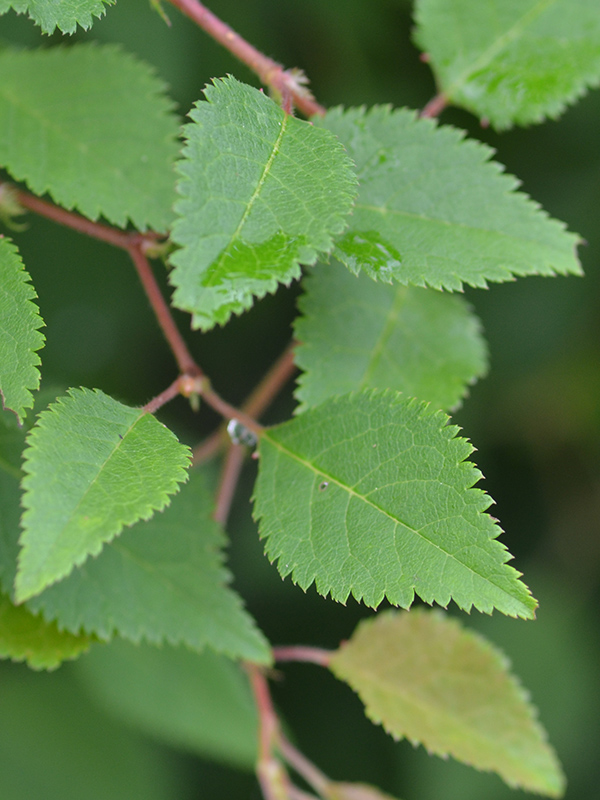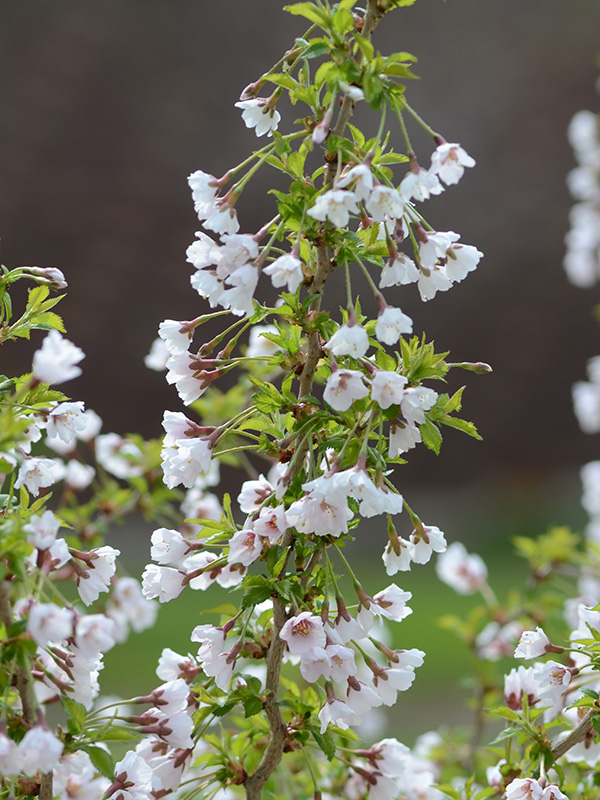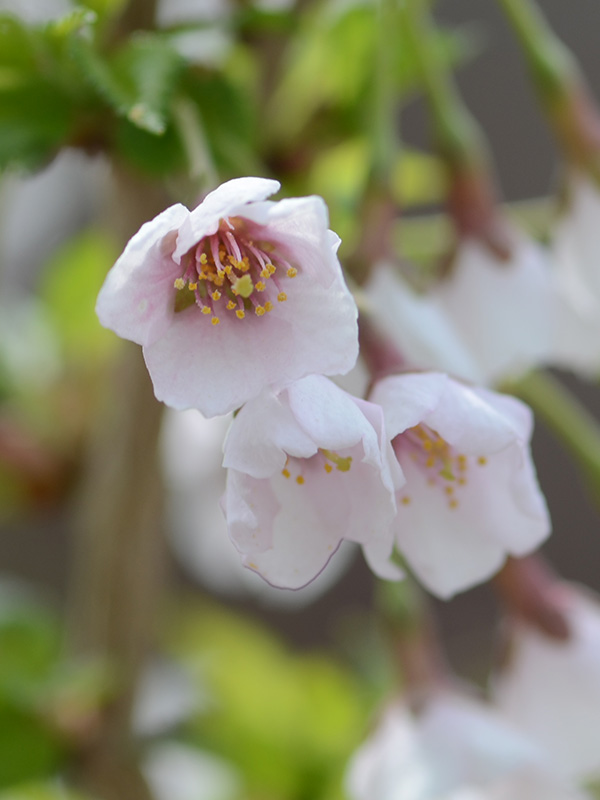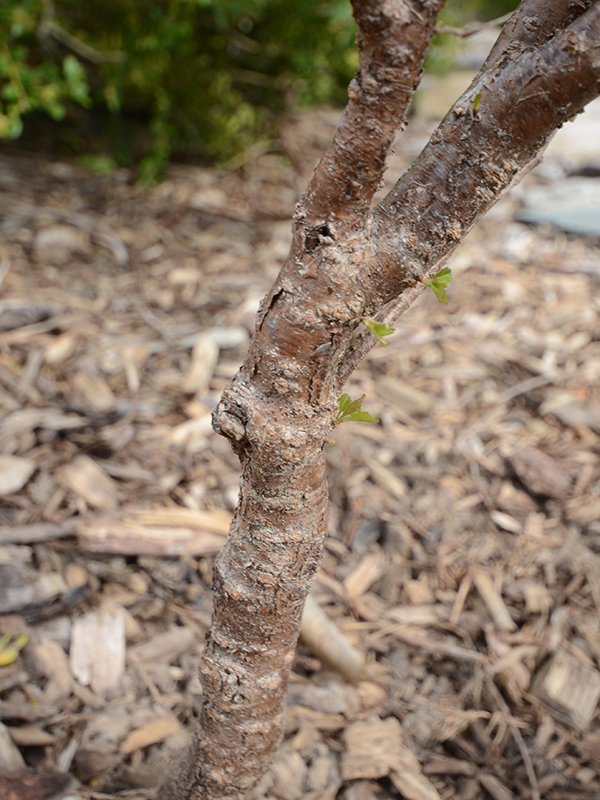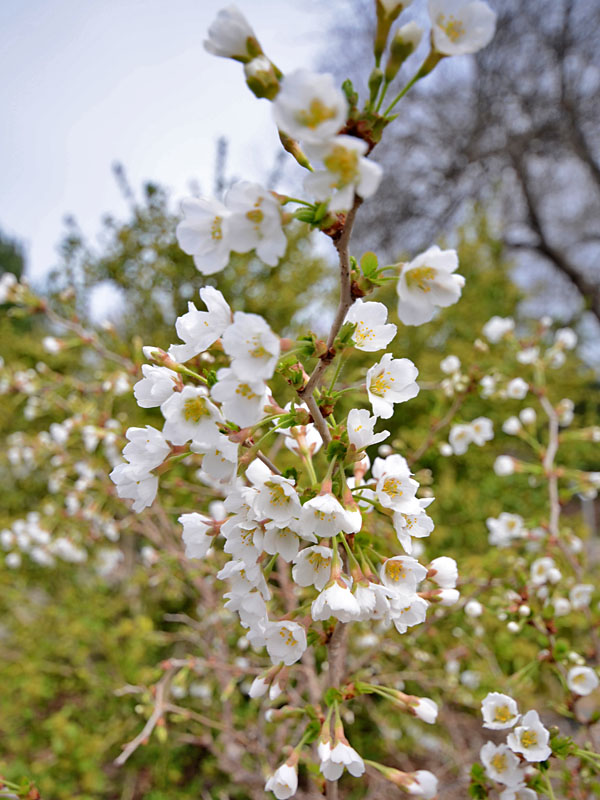| General Description | Prunus incisa 'Kojo-no-mai' is a slow-growing cultivar with zig-zag branching and white flowers tinged with pink becoming more pink with age. It has excellent autumn colour ranging from orange to red; one of the more commonly available cultivars of an uncommon species. |
| Shape | Rounded. |
| Propagation | By semi-hardwood cuttings. |
| Cultivation | Grow in any well-drained, moisture retentive soil. Prefers an open position in full sun. Pruning is rarely necessary, but when unavoidable is best done in late summer so that the cuts can heal before winter.
|
| Pests | Bullfinches, caterpillars and aphids can be troublesome, as can bacterial canker, blossom wilt, honey fungus and silver leaf.
Plum Pox:
Symptoms may be confused with other diseases/disorders such as nutrient deficiencies or pesticide injuries. PPV symptoms can occur on leaves, flowers and/or fruit. Faint yellow rings or lines may be found on the leaves. PPV generally does not cause plant mortality however, can reduce the plant productivity and longevity.
How to Reduce the Spread and Impact of PPV:
1. Propagate vulnerable Prunus trees and shrubs outside of the affected area
a. Isolation is important to protect clean plants from future spread of the disease.
b. Propagating and growing vulnerable plants away from the virus-infected area reduce the likelihood of the disease spreading any further. This should be as far away from the quarantined area and any potential sources of the virus.
2. Propagate Prunus plants with virus-free Budwood and Rootstock from virus tested mother trees
a. This eliminates the propagation link for viral diseases.
3. Inspect vulnerable Prunus for symptoms
a. All Prunus shrubs and trees should be visually inspected for symptoms at lease twice per year and conducted by trained personnel familiar with the virus.
b. Any plants found to be infected should not be moved or sold and must be reported to the Canadian Food Inspection Agency immediately.
c. Inspections should not be conducted in periods of hot weather (temperatures over 30˚C).
4. Manage aphid vectors
a. Aphids are extremely attracted to suckers (vegetative shoots at the base of the tree), these should be removed to avoid aphid colonization, feeding or migration.
5. Plant tolerant and resistant varieties
a. When available, grow plum pox tolerant or resistant Prunus varieties.
|
| Notable Specimens | The A. M. Cuddy Gardens, Strathroy, Ontario, Canada. |
| Habitat | Horticultural origin. |
| Flower/Leaf Bud Description | Light red to pink. |
| Leaf Description | Young leaves are yellow-green, lance-shaped and 6-30 mm long, turning mid-green by summer and vibrant orange-red in autumn. |
| Flower Description | Pale pink with red centres, 1.5 cm in diameter, borne singly or in pairs. |
| Fruit Description | Attractive, dark purple. |
